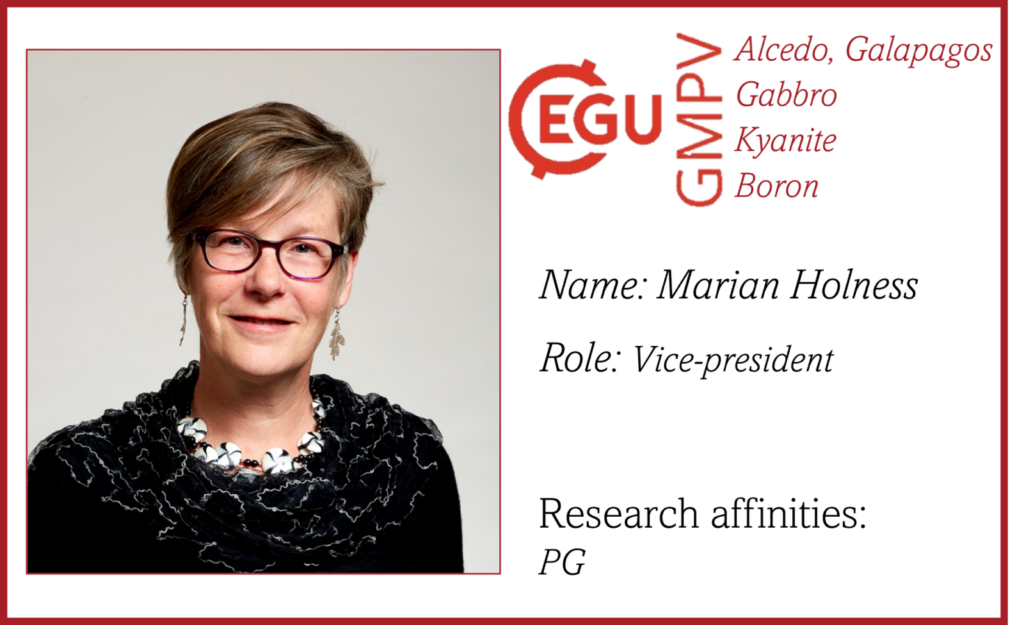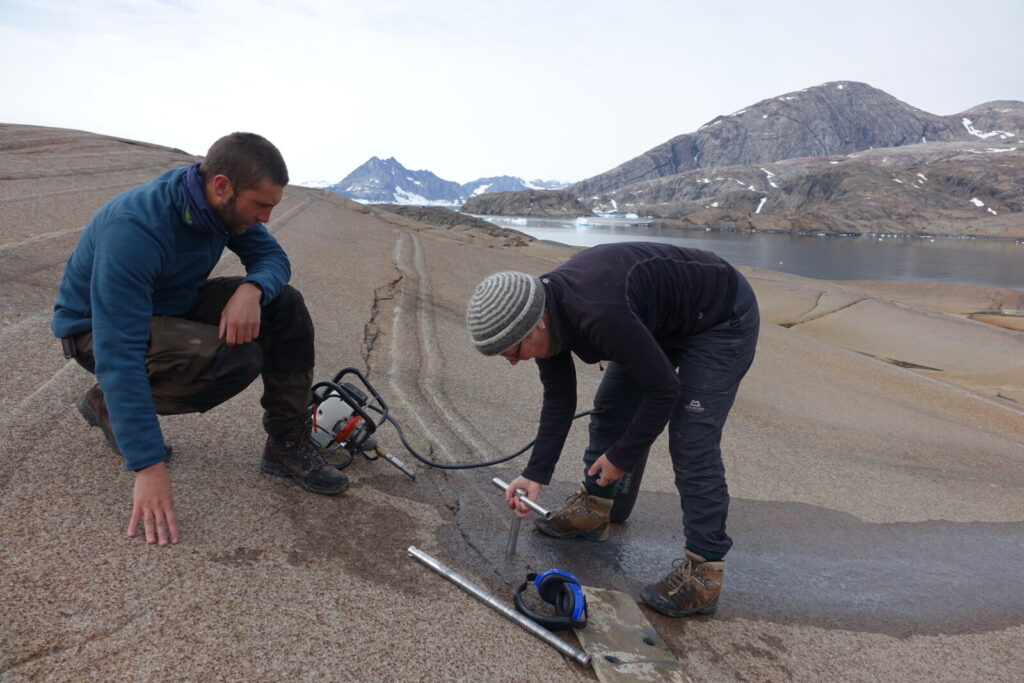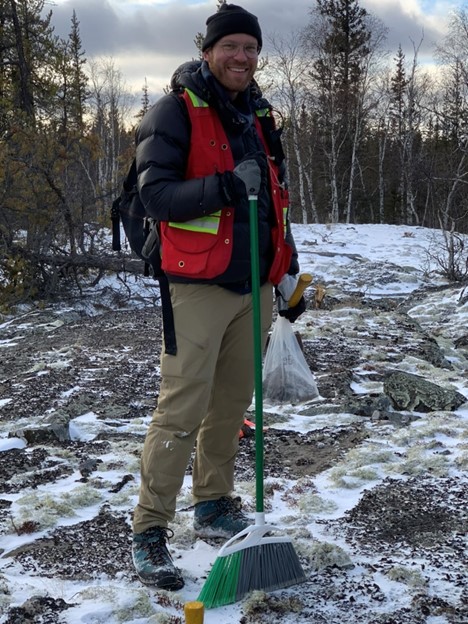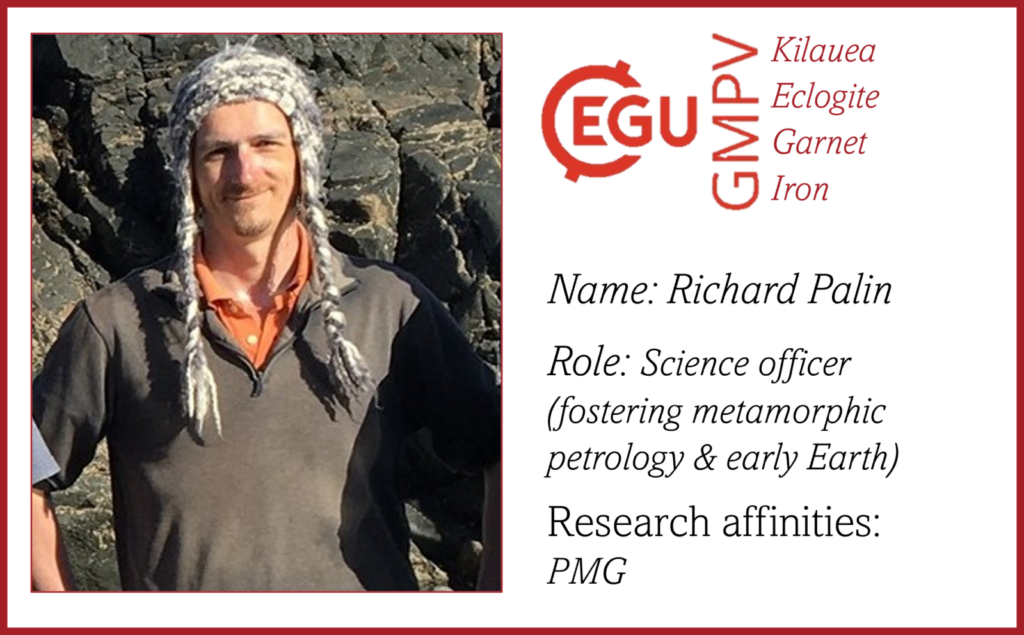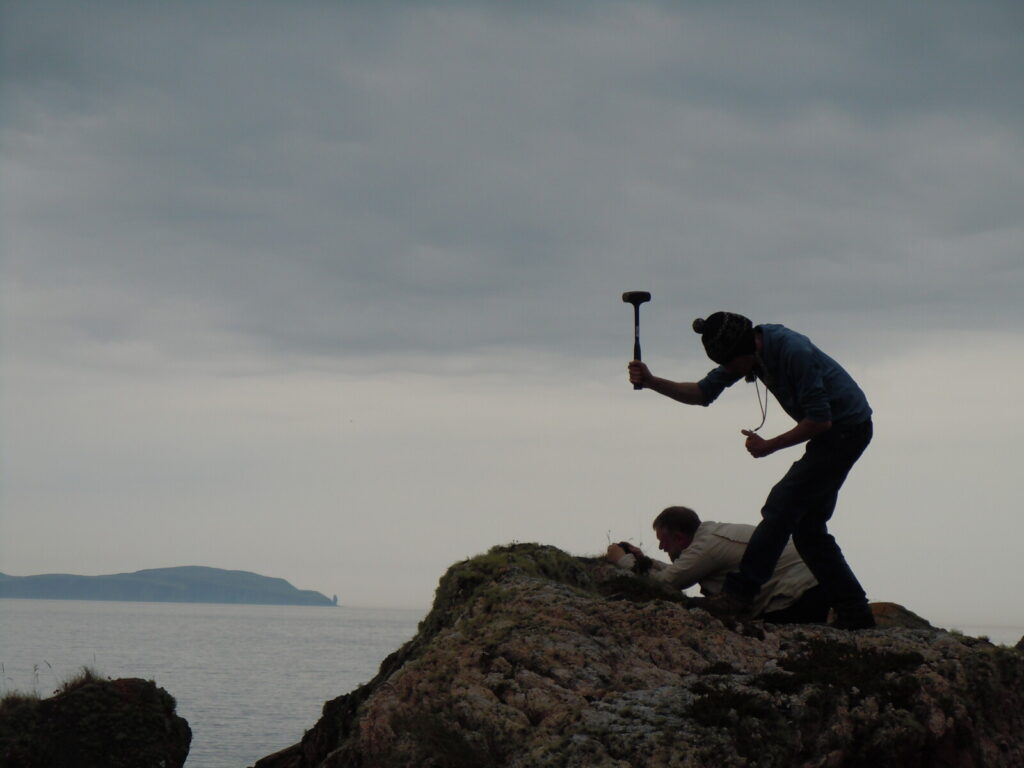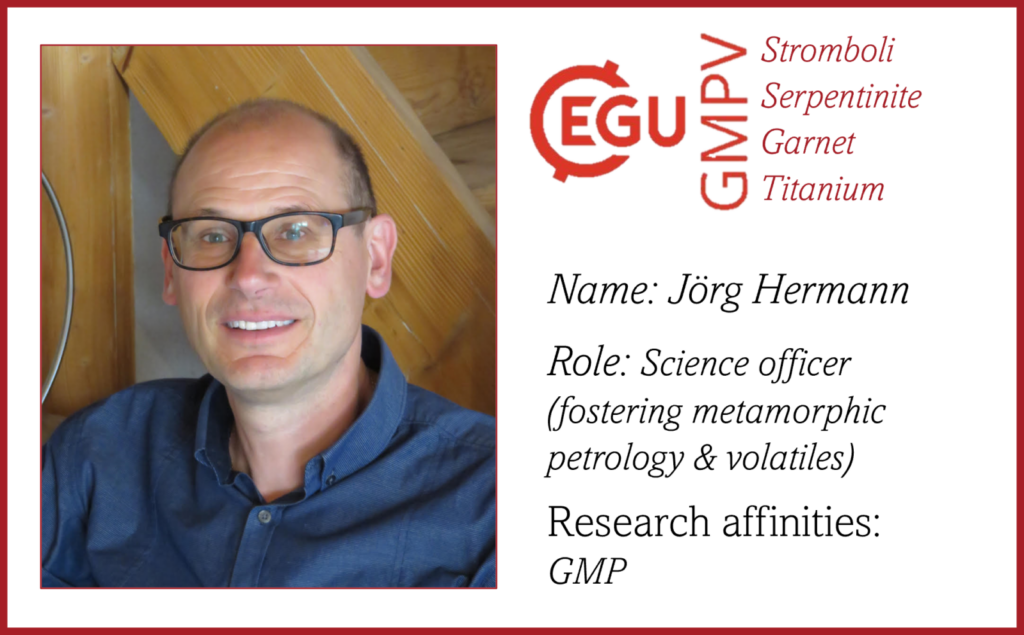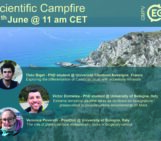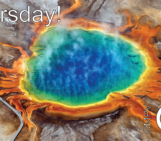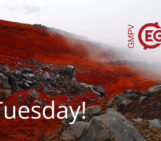
As we approach the EGU General Assembly, we remember that there are a number of people working hard to ensure that sessions on our favourite topics are secured. This also ensures that topics of interest to as wide a range of scientists as possible are covered. This is why the GMPV Division has representatives from the various fields of geochemistry, mineralogy, petrology and volcanology.
Last time, I introduced the first four officers of the GMPV Divison. In this second take, I got to ask Marian Holness, Mathias Burisch-Hassel, Richard Palin and Jörg Hermann about their roles in the GMPV Division and how they got involved. I also wanted to find out more about them, including their favourite rock and element! They were kind enough to answer my questions and now you can learn a few things about them. Enjoy!
1. Tell us where you work and what is your main role as a professional.
University of Cambridge, UK. Professor of Petrology
2. Which area of the GMPV you think your research is closest to?
I work on microstructures, mainly on plutonic igneous rocks, though I started out as a metamorphic petrologist. My work involves geochemistry too, since mineral composition is also an important factor in controlling microstructure
3. Can you explain in more detail what is your main research about?
I try to decode the solidification history of igneous rocks from an examination of their microstructure. It is effectively doing the opposite of what materials scientists do…they experiment with materials to create the correct microstructure for their purposes (making a turbine blade as strong as possible, avoiding metal fatigue, etc), whereas I use their knowledge of the physical processes that control microstructure to work out why a rock looks the way it does.
4. How did you get involved with the EGU-GMPV group?
I always enjoyed the GA meetings, and began to feel that I should start to contribute something. So I stood for Division President and, much to my delight, I got elected! I love being part of the EGU team, and am very impressed by the enthusiasm of the GMPV family.
5. Can you explain in more detail what is your role in the group?
I was Division President and am now acting as Vice-President. I also chair the committee that awards the Robert Wilhelm Bunsen Medal – the highest honour of GMPV
6. What words of advice do you have to GMPV early-career scientists?
Attend the GA, be brave and talk to people, especially those whose talks and posters you enjoyed and were inspired by. Science is a collaborative activity and the more people you talk to and interact with, the easier it will be to make progress.
GMPV curiosities:
G – favourite element is? Boron
M – favourite mineral is? Kyanite
P – favourite rock is? Gabbro
V – favourite volcano is? Alcedo, Galapagos
1. Tell us where you work and what is your main role as a professional.
I work for the Colorado School of Mines in the picturesque town of Golden. As a professor of economic geology, my main tasks encompass research, teaching, and mentoring.
2. Which area of the GMPV you think your research is closest to?
The field of economic geology is broad and combines many subdisciplines of the geosciences, but I feel probably closest to petrology and geochemistry.
3. Can you explain in more detail what is your main research about?
My research focuses on the understanding of the sum of geological processes that result in the formation, transformation, and preservation of ore deposits. I study magmatic, magmatic-hydrothermal, and hydrothermal mineral systems which host a variety of resources ranging from lithium to gold. My analytical approach is broad, but I am most passionate about geochronology, fluid inclusions and mineral paragenesis, which I usually combine to develop deposit- to continental-scale metallogenetic models.
4. How did you get involved with the EGU-GMPV group?
Holly asked me.
5. Can you explain in more detail what is your role in the group?
I am a science officer and representative of the fields of economic geology and mineral resources.
6. What words of advice do you have to GMPV early-career scientists?
Engage with mid- and late-career scientists and find good mentors through conferences and societies. Learn to focus and prioritize.
GMPV curiosities:
G – favourite element is? Gold
M – favourite mineral is? Garnet
P – favourite rock is? Skarn
V – favourite volcano is? Altenberg-Teplice Caldera
1. Tell us where you work and what is your main role as a professional.
I work in the Department of Earth Sciences at the University of Oxford, UK. I’m Associate Professor of Petrology, so I do roughly equal parts teaching, student supervision, and research. Currently, my research group includes four PhD students and five Masters students who are doing various projects.
2. Which area of the GMPV you think your research is closest to?
I’m definitely closest to petrology, but mineralogy and geochemistry form cornerstones of my research too. It’s almost impossible to separate them out in most projects.
3. Can you explain in more detail what is your main research about?
During my PhD (DPhil), I combined metamorphic petrology, structural geology, and geochronology to study various parts of the Himalayan Range and Tibetan Plateau. Then, whilst working in Germany, I developed a strong interest in how the Earth has changed through time. In the context of petrology, this mostly relates to how we can interrogate the rock record to understand key questions, such as how, when, and why did plate tectonics begin on Earth? In addition, most researchers who study the early Earth eventually find themselves doing a bit of planetary geology, as we can use other rocky bodies as analogues for the pre-plate tectonic Earth.
These themes have shaped my research program for the past ten years or so, although recently I have started some research projects with collaborators looking at critical metals in metamorphic and magmatic systems. The mechanisms that concentrate them in igneous rocks, for example, are identical to those that I have studied in the past. This allows me to apply tools that I am familiar with to these new research questions and branch out into new fields.
4. How did you get involved with the EGU-GMPV group?
I have been part of the GMPV for two years now. I don’t quite remember how I became involved with it initially! I think I was recommended by an outgoing member, but I was very happy to be asked to help out.
5. Can you explain in more detail what is your role in the group?
I am a Science Officer with a specialty on ‘Metamorphic petrology and Early Earth’. This means that I try to drum up interest within the community for the EGU conference each year, and I will often chair or co-chair sessions on these themes. This brings students, researchers, and academics from all over the world together to share ideas and think about how to approach new challenges.
6. What words of advice do you have to GMPV early-career scientists?
I would advise early-career scientists to get involved with their local, national, and international communities as much as they can. Attend meetings, workshops, conferences (if you can) and take every opportunity to show off your work. Developing a strong network of collaborators and peers is a really great way to develop your research program and become a well-rounded scientist.
GMPV curiosities:
G – favourite element is? Iron
M – favourite mineral is? Garnet, of course.
P – favourite rock is? Eclogite, preferably coesite-bearing
V – favourite volcano is? Hmm, I don’t study active volcanoes at all. Hawaii?!
1. Tell us where you work and what is your main role as a professional.
I am a professor of Petrology at the University of Bern.
2. Which area of the GMPV you think your research is closest to?
Geochemistry, Mineralogy, Petrology
3. Can you explain in more detail what is your main research about?
I am investigating the Earth’s deep volatile cycle in subduction zones. I have focussed on the dehydration reactions in subducted ultramafic rocks and how these influence the formation of new crust. Of particular importance is how much water is incorporated into nominally anhydrous minerals in the subducted slab and mantle wedge. In collaboration with two PhD students, we are investigating water incorporation into pyroxene and rutile. The H2O incorporation into rutile can also serve to determine from the detrital rutile record, when cold subduction initiated on Earth. Together with a Post Doc I am currently investigating how the deep water cycle in the Archean is related to the formation of Tonalite-Trondhjemite-Granite felsic crust, with a focus on the study of hydrated komatiites.
I am involved in the continental drilling project DIVE (Drilling the Ivrea Verbania Zone) where two sections of the lower continental crust are sampled. With a PhD student we are looking at the storage of hydrogen, carbon and sulphur in lower crustal rocks that derive either from sedimentary or igneous rocks. At a larger scale we are investigating how the processes that led to the formation of the lower crust influence the physical properties.

Jörg on top of a serpentinite (favoured rock) with veins of Ti-Clinohumite (favoured element) and Ti-andradite garnet (favoured mineral)
4. How did you get involved with the EGU-GMPV group?
I was approached by Mike Burton to join the GMPV in 2018 and bring expertise on metamorphic processes on the global volatile cycle.
5. Can you explain in more detail what is your role in the group?
I am bridging between the fields of geochemistry, petrology and experimental petrology. I have been encouraging early career researchers to propose and convene sessions at EGU. I am also liaising with the Geochemical Society. I serve on the the OECS award committee.
6. What words of advice do you have to GMPV early-career scientists?
Get involved in activities of the GMPV community. It is a great opportunity to meet researchers and to participate to shape the themes of future conferences. Networking and engagement in societies is an important service for the community and is an essential part of an academic career.
GMPV curiosities:
G – favourite element is? Titanium
M – favourite mineral is? Garnet
P – favourite rock is? Serpentinite
V – favourite volcano is? Stromboli
I hope you enjoyed reading these inspirational words and getting to know our science officers. But we are not done yet. Do not miss the remaining interviews, coming out soon!

